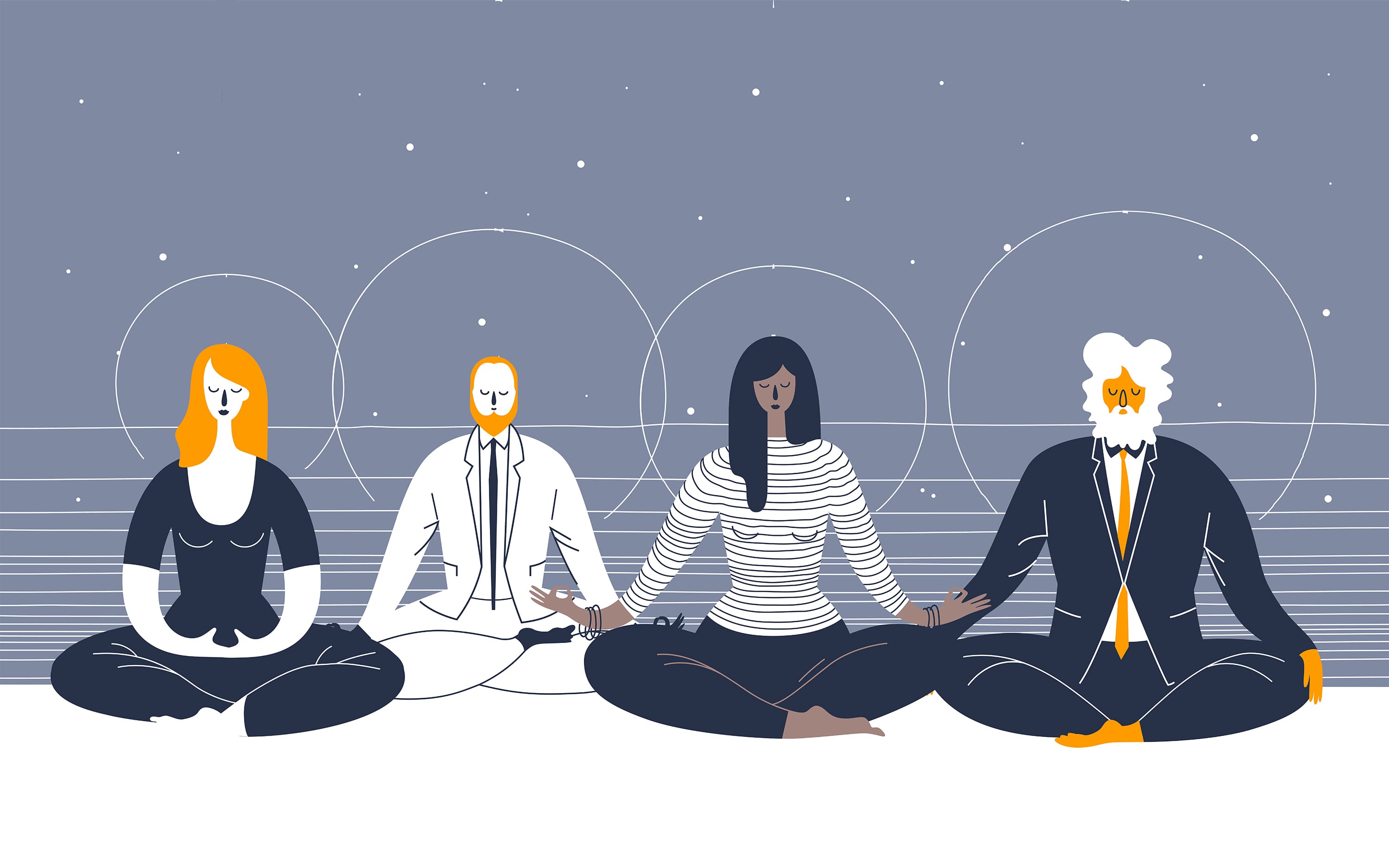
Mindfulness meditation has become a buzzword, but what exactly is it? Mindfulness is the practice of being present and fully engaged with whatever you're doing at the moment. It’s about observing your thoughts and feelings without judgment. This ancient practice, rooted in Buddhism, has gained popularity for its benefits on mental health and overall well-being. People use it to reduce stress, improve focus, and even manage chronic pain. But there's more to it than just sitting quietly. From its origins to its modern applications, here are 50 facts that will give you a deeper understanding of mindfulness meditation. Ready to dive in? Let's get started!
Key Takeaways:
- Mindfulness meditation, rooted in ancient traditions, offers numerous benefits like reducing stress and improving focus. It's not just for monks and can be practiced anywhere, even by kids.
- Mindfulness isn't just about relaxation; it's about increasing awareness and focus. Famous practitioners like Oprah Winfrey and LeBron James swear by its benefits for managing stress and improving performance.
What is Mindfulness Meditation?
Mindfulness meditation is a practice that involves focusing your mind on the present moment. It helps in reducing stress, enhancing emotional health, and improving overall well-being. Here are some fascinating facts about mindfulness meditation.
-
Mindfulness meditation has ancient roots. Originating from Buddhist traditions, it has been practiced for over 2,500 years.
-
It’s not just for monks. While it started in religious contexts, today, people from all walks of life practice mindfulness.
-
Mindfulness can be practiced anywhere. You don’t need a special place or equipment. Just a quiet spot and a few minutes.
-
It’s about being present. The main goal is to focus on the here and now, rather than worrying about the past or future.
-
Breathing is key. Many mindfulness exercises focus on breathing to help anchor your thoughts.
Benefits of Mindfulness Meditation
Mindfulness meditation offers numerous benefits for both mental and physical health. Here are some of the most notable ones.
-
Reduces stress. Regular practice can lower cortisol levels, the hormone associated with stress.
-
Improves focus. Mindfulness helps enhance concentration and attention span.
-
Boosts emotional health. It can increase self-awareness and reduce symptoms of depression and anxiety.
-
Enhances sleep quality. Practicing mindfulness before bed can lead to better sleep patterns.
-
Lowers blood pressure. It can help reduce hypertension by promoting relaxation.
Scientific Backing
Mindfulness meditation isn’t just a fad; it’s backed by science. Researchers have conducted numerous studies to understand its effects.
-
MRI scans show changes in the brain. Regular practice can increase gray matter in areas related to memory, learning, and emotional regulation.
-
Reduces symptoms of PTSD. Veterans and trauma survivors have found relief through mindfulness techniques.
-
Improves immune function. Studies suggest that it can boost the immune system, making you less susceptible to illnesses.
-
Helps manage chronic pain. Mindfulness can change the way you perceive pain, making it more manageable.
-
Enhances cognitive flexibility. It helps the brain switch between tasks more efficiently.
How to Practice Mindfulness Meditation
Getting started with mindfulness meditation is easier than you might think. Here are some tips to help you begin.
-
Start small. Begin with just a few minutes each day and gradually increase the duration.
-
Find a quiet space. Choose a place where you won’t be disturbed.
-
Sit comfortably. You don’t need to sit cross-legged; just find a position that’s comfortable for you.
-
Focus on your breath. Pay attention to the sensation of breathing in and out.
-
Acknowledge distractions. When your mind wanders, gently bring your focus back to your breath.
Mindfulness in Daily Life
Mindfulness isn’t limited to meditation sessions. You can incorporate it into your daily activities.
-
Mindful eating. Pay attention to the taste, texture, and smell of your food.
-
Mindful walking. Focus on the sensation of your feet touching the ground.
-
Mindful listening. Give your full attention to the person speaking to you.
-
Mindful chores. Engage fully in tasks like washing dishes or folding laundry.
-
Mindful driving. Stay present and focused on the road.
Mindfulness for Kids
Children can also benefit from mindfulness practices. It can help them manage stress and improve focus.
-
Mindful breathing exercises. Simple breathing techniques can help kids calm down.
-
Mindful storytelling. Use stories to teach kids about mindfulness.
-
Mindful coloring. Coloring can be a meditative activity for children.
-
Mindful games. Games that require focus and attention can be a fun way to practice mindfulness.
-
Mindful bedtime routines. Incorporate mindfulness into bedtime to help kids relax and sleep better.
Mindfulness in the Workplace
Mindfulness can also be beneficial in professional settings. It can improve productivity and reduce workplace stress.
-
Mindful meetings. Start meetings with a few minutes of mindfulness to set a calm tone.
-
Mindful breaks. Take short breaks to practice mindfulness and recharge.
-
Mindful communication. Practice active listening and clear communication.
-
Mindful leadership. Leaders who practice mindfulness can create a more positive work environment.
-
Mindful work habits. Focus on one task at a time to improve efficiency.
Mindfulness and Technology
Technology can be both a distraction and a tool for mindfulness. Here’s how to use it wisely.
-
Mindfulness apps. Apps like Headspace and Calm offer guided meditations.
-
Digital detox. Take breaks from screens to practice mindfulness.
-
Mindful social media use. Be conscious of how much time you spend on social media.
-
Mindful notifications. Turn off unnecessary notifications to reduce distractions.
-
Mindful online interactions. Engage in positive and meaningful online conversations.
Common Misconceptions
There are many myths about mindfulness meditation. Let’s clear up some of the most common ones.
-
It’s not about emptying your mind. The goal is to focus your mind, not empty it.
-
It’s not religious. While it has roots in Buddhism, mindfulness is a secular practice.
-
It’s not just for relaxation. While it can be relaxing, it’s also about increasing awareness and focus.
-
It’s not time-consuming. Even a few minutes a day can be beneficial.
-
It’s not difficult. With practice, anyone can learn to meditate.
Famous Practitioners
Many well-known individuals practice mindfulness meditation. Here are a few who swear by it.
-
Oprah Winfrey. She incorporates mindfulness into her daily routine.
-
LeBron James. The basketball star uses mindfulness to improve his performance.
-
Ariana Huffington. The media mogul practices mindfulness to manage stress.
-
Steve Jobs. The late Apple co-founder was a strong advocate of mindfulness.
-
Emma Watson. The actress uses mindfulness to stay grounded.
Final Thoughts on Mindfulness Meditation
Mindfulness meditation offers numerous benefits for both mental and physical health. Practicing regularly can reduce stress, improve focus, and enhance emotional well-being. It’s accessible to everyone, requiring no special equipment or extensive training. Just a few minutes each day can make a significant difference. Whether you’re new to meditation or have been practicing for years, integrating mindfulness into your daily routine can lead to a more balanced and fulfilling life. Remember, the key is consistency. Start small, be patient with yourself, and gradually increase your practice. Over time, you’ll likely notice positive changes in how you think, feel, and interact with the world around you. So, take a deep breath, find a quiet space, and begin your mindfulness journey today. Your mind and body will thank you.
Frequently Asked Questions
Was this page helpful?
Our commitment to delivering trustworthy and engaging content is at the heart of what we do. Each fact on our site is contributed by real users like you, bringing a wealth of diverse insights and information. To ensure the highest standards of accuracy and reliability, our dedicated editors meticulously review each submission. This process guarantees that the facts we share are not only fascinating but also credible. Trust in our commitment to quality and authenticity as you explore and learn with us.


